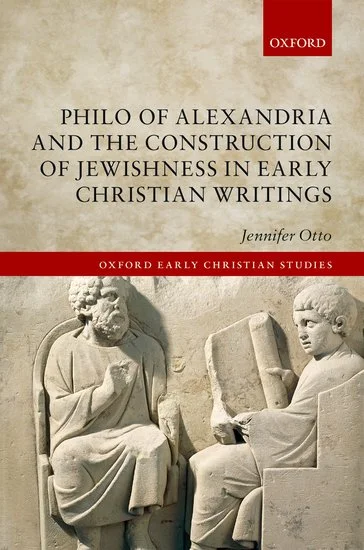In my book, Apocalyptic Ecology, I utilize venationes as part of the Roman world against which John of Patmos reacted in writing the New Testament book of Revelation.
Read MoreWriting on the Wall: Graffiti and the Forgotten Jews of Antiquity
Jillian Stinchcomb reviews Karen Stern’s Writing on the Wall: “Stern’s work synthesizes archaeological and material histories across the Mediterranean, bringing together discussions of the lived realities of a Jews from socio-economic perspectives that are under-represented in rabbinic and other (elite) literary Jewish texts.”
Read MoreWeek in Review (5/31/19)
Amarna Letter EA 362, Rib-Hadda to Pharaoh on the topic of murder | Cuneiform on clay, C14; currently held in the Louvre | Image Source
Amarna Letter EA 362, Rib-Hadda to Pharaoh on the topic of murder | Cuneiform on clay, C14; currently held in the Louvre | Image Source
This Week: Animality, panbabylonianism, Nero’s Domus Aurea, palimpsests, cultural heritage, genizah online – and more!
Read MoreInner Animalities
Scholars of animal studies unanimously reject anthropological exceptionalism. Much of the conversation in the field has turned on how to reject it and why we ought to do so. In the wake of this literature, I find myself all the more intrigued by the textual ecology of late antique Christianity, since these texts play an outsized role in shaping the shared topography of humanness and animality that we find ourselves inhabiting.
Read MoreWeek in Review (5/24/19)
The apostles at Pentecost, from a thirteenth-century Peshitta | State Library of Berlin, Sachau 304, MS 195 Bl., f.123v | Image Source
The apostles at Pentecost, from a thirteenth-century Peshitta | State Library of Berlin, Sachau 304, MS 195 Bl., f.123v | Image Source
This Week: Codex Bezae as plunder, Syriac cultural heritage, Tiburtine Sibyl, digital archaeology, the Seleucid invention of time – and more!
Read MoreTextual Objects and Material Philology
These essays were part of a panel at the Society of Biblical Literature 2018 Annual Meeting titled, “Textual Objects and Material Philology,” inspired in part by the publication of Snapshots of Evolving Traditions (eds. Lied and Lundhaug).
Read MoreTextual Scholarship, Ethics, and Someone Else's Manuscripts
The Plunders of Codex Bezae
Week in Review (5/17/19)
Magic bowl with Aramaic inscription and (adorable) demon | C6/7, from Nippur, currently in the collection of the Met Museum | Image Source
Magic bowl with Aramaic inscription and (adorable) demon | C6/7, from Nippur, currently in the collection of the Met Museum | Image Source
This Week: The Song of Miriam, Dual Syriac/Uyghur prayerbooks, Syriac symposiums, Arshama’s Aramaic, the Doctrina Jacobi – and more!
Read MoreTwo languages, two scripts, three combinations: A (personal?) prayer-book in Syriac and Old Uyghur from Turfan (U 338)
Adam Bremer-McCollum’s contribution to the Textual Objects forum.
Read MoreContinue to Sing, Miriam! The Song of Miriam in 4Q365
Week in Review (10/5/19)
Roman gold and glass intaglio pendant | ca.C2-C3 CE, Northamptonshire (England) | Image Source
Roman gold and glass intaglio pendant | ca.C2-C3 CE, Northamptonshire (England) | Image Source
This Week: Tura papyri, engraved gemstones, epigraphy resources, Byzantium, circumcision and gender – and more!
Read MoreA Material History of the Tura Papyri
Blossom Stefaniw’s contribution to the Textual Objects and Material Philology Panel from SBL 2018.
Read MoreIs Vienna hist. gr. 63, fol. 51v-55v a “fragment”?
Janet Spittler’s contribution to the Textual Objects and Material Philology Panel from SBL 2018.
Read MoreDissertation Spotlight | Monika Amsler
Monika Amsler. “Effective Combinations of Words and Things: The Babylonian Talmud Gittin 67b-70b and the Literary Standards of Late Antiquity,” PhD Dissertation, University of Zurich, Switzerland, 2018.
Read MorePhilo of Alexandria and the Construction of Jewishness in Early Christian Writings
Sheldon Steen reviews Jennifer Otto’s Philo of Alexandria and the Construction of Jewishness in Early Christian Writings: “The epithets he is given betray at once the utility and liability of Philo for Christian discourses of identity because of how he is depicted as never fully one of “us” nor one of “them.”"
Read MoreWeek in Review (4/19/19)
Early Christian catacomb painting | Third-century, Catacomb of Saint Calixte (Rome) | Image Source
Early Christian catacomb painting | Third-century, Catacomb of Saint Calixte (Rome) | Image Source
This Week: Jewish and Christian figural art, Jewish mothers, endangered archives, Bible versus Classics, Byzantine Balkans – and much more!
Read MoreArt as a Medium of Religious Dialogue and Competition in Late Antiquity
Dr. Catherine Hezser introduces her book Bild und Kontext: Jüdische und christliche Ikonographie der Spätantike: “I examine exemplary biblical, mythological, and symbolic images in the context of Jewish, Christian, and Graeco-Roman literary sources to determine their possible uses and meanings within the multi-cultural realms of late antique society. I argue that the images were carefully chosen to engage in an ongoing visual discourse within the public sphere.”
Read MoreBook Note | Mothers in the Jewish Cultural Imagination,
Sari Fein reviews the edited volume, Mothers in the Jewish Cultural Imagination: “What other images of mothers exist in the Jewish cultural imagination? And, what do those images reveal about wider ideas of gender and family in Jewish culture?”
Read MoreWeek In Review (4/12/19)
Detail of the Madaba Map | Sixth-century, from the Church of St. George (Jordan) | Image Source
Detail of the Madaba Map | Sixth-century, from the Church of St. George (Jordan) | Image Source
This Week: Imperialism and Christian knowledge, beeswax, bioarchaeology, biblical papyri, the Madaba Map – and more!
Read More
















